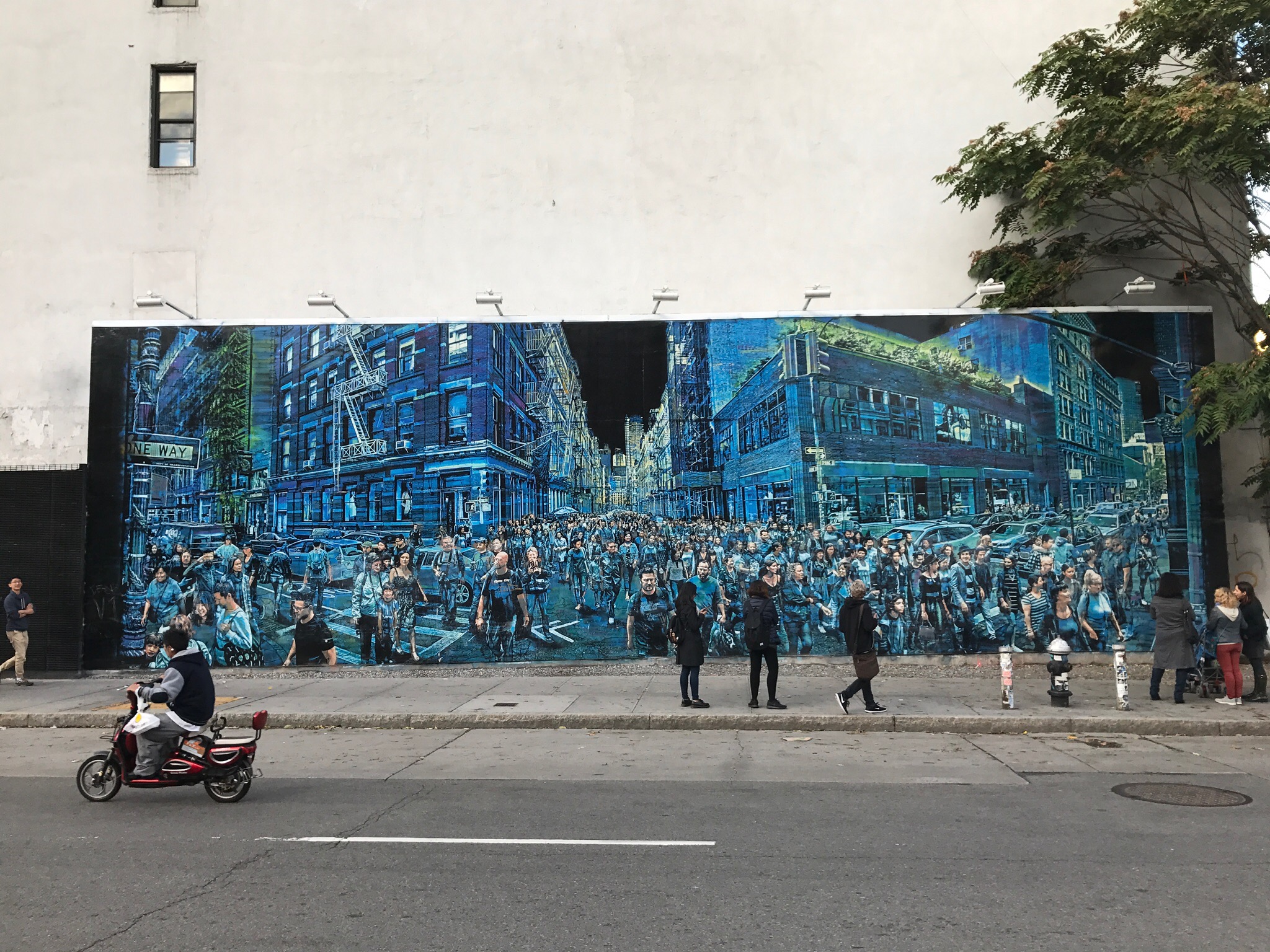Category: Uncategorized
Food I ate in 2016
Like plenty of people, I take pictures of my food. A friend asked once, “Do you ever even look at those pictures later?” Well, now’s my chance. I looked at each month and picked a picture from a meal I enjoyed. Here we go.
January: Toki Underground — Washington D.C.

Man I want these noodles again. For all the food in New York and all the noodles we had in Japan, this bowl was probably one of the best things of food that I had this year. We had a D.C. trip in the works and added this after seeing it on Michael Pollan’s Cooked on Netflix. Just kidding, it was on Diners, Drive-ins, and Dives.
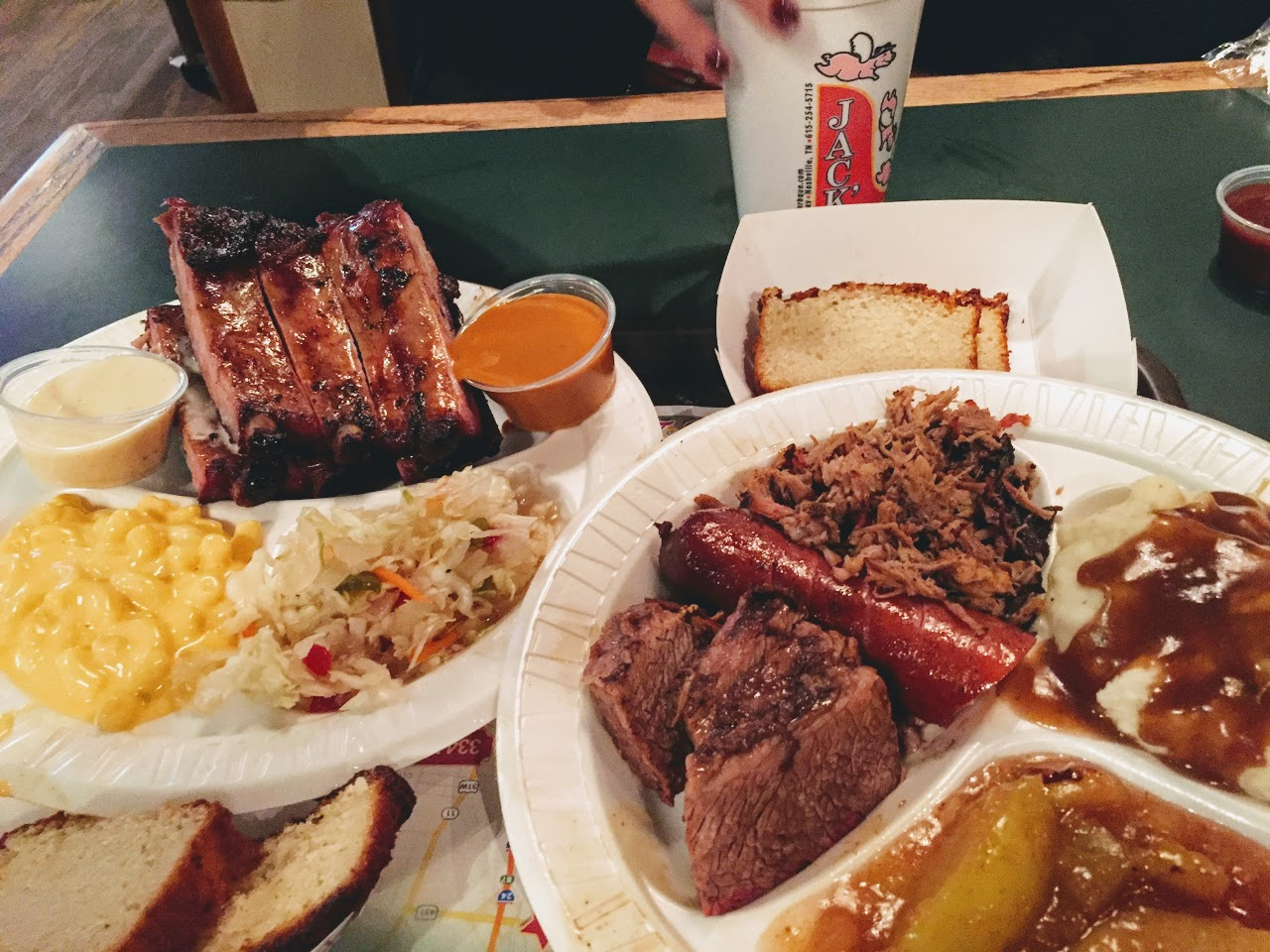
February: BBQ — Nashville
My girlfriend pulled the Master of None move on me and surprised me with tickets to Nashville the day before the flight. Just like it looked on the show, Nashville was a lot of fun. There’s live music everywhere, and the performers are good.
March: Roberta’s — Brooklyn

Roberta’s has a separate take-out location right next door. In 2015, we had both never been to Roberta’s and thought the take-out location was the main location. We got a (great) pizza at the take-out counter and ate it on some seats set up outside. We enjoyed the meal, left, and had no idea we weren’t at the main location.
Weeks later we were looking at reviews and noticed the pictures of the place looked much different. We went back to experience the actual restaurant and it was again a great meal.
April: Smorgasburg (the Prospect Park one) — Brooklyn

I love Smorgasburg. I don’t go often enough. People love taking pictures of food here, so I fit right in. Lobster rolls seem to mark good points in my time in New York. Probably because it means someone’s visiting and we’re eating outdoors.
May: Rokurinsha — Tokyo

Just amazing. We saw this on Mind of a Chef. There was so much good food in Japan. I’d love to go back. I like going back to places I enjoy maybe more than I like going to the places for the first time.
Like my 2nd time at a good restaurant is really enjoyable. You know what to order. You can also order that thing you saw other people order that looked good the first time around. There’s no anxiety of having picked the restaurant and hoping to god that the friends you’re with enjoy it and respect you as a person for picking that restaurant. God help you if they don’t like it.
I could have written entire posts about what I ate in Japan. And I did!
- Japan Trip 4 of 10: As seen on TV
- Japan Trip 5 of 10: Ramen
- Japan Trip 7 of 10: Cheap eats
- Japan Trip 9 of 10: Tsukiji Market
- Japan Trip 10 of 10: More As Seen on TV
June: Crab at home — Oak Harbor, Washington

I grew up in Oak Harbor and there’s a lot of Dungeness crab. It’s not known for it or anything. I somehow didn’t realize what kind of luxury this was growing up. There are just a lot of families that crab and they usually have a surplus of crab so they give it away or sell it for very cheap. (Say $5 per lobster.)
When it’s in season, my parents usually have some for me if I visit. There are few things I enjoy more than laying out a bunch of newspaper, pouring some vinegar to dip in, then ripping the top shell off and cracking the steamed corpse in half and having the off yellow fat drip on top of a bowl of fresh steamed rice. It’s further enhanced when I use the clean pinky on one hand to hit play on a random on-demand episode of Diners, Drive-ins, and Dives.
Bliss.
July: Random Korean dishes with friends — Financial District

I have a group of friends from California who moved to New York around the same time I did. With some of their other friends, we all became a small family to spend our orphaned holidays together.
A running half-joke was that some of them were constantly a few months away from moving back to LA. Then they’d say “We decided to stay one more year” and we’d celebrate the decision. Some of them are actually making the move out of New York now so I’ve been in the midst of the reminiscing.
Some more my best memories in New York are with them. We hang out less frequently than we used to but when we get together it’s a blast. Almost always followed by a hangover.
Bonus food place: Per Se — I wrote about this here. One of the best meals of my life.
August: Shuko — New York

Great sushi and a not so stuffy environment. They played a lot of Drake. I love this place.
September: Very Fresh Noodles — Chelsea Market

I go to Xi’an Famous Foods regularly. I might like Very Fresh Noodles better. It used to be my go-to meal after any weekend gym trips.
October: This steak — My humble abode

I love steak. For a date night in, I splurged on one of the $25-ish per pound cuts at Whole Foods. The pan was too small to hold it. Did what I could, crossed my fingers, and it turned out pretty good.
As mentioned before, lobster rolls signal good outdoor memories. These pricey steaks now make me think of great times indoors. Another time I did this was my first month in New York, away from family. It was my first time alone on Christmas Eve. Which sounds kind of sad but for some reason is a good memory almost entirely because I had an enormous steak to eat.
November: Wataru — Seattle

I was with my favorite people in the world eating amazing sushi1. Add in some sake and it’s my favorite meal this year.
December: Cleavers — Philadelphia

I spent an hour or so reading about cheesesteaks trying to pick a few places to try. Ingredients and health wise, it’s nearly the same as saying “Yeah, let me get 3 double cheeseburgers.” It’s awesome.
We were only in town for a couple days so we didn’t have many meals to spare on this. I considered the classics and read multiple top-cheesesteaks lists. Then we went to the most mainstream of the bunch.
This is not a hole in the wall local find. It’s downtown, clean, three floors, with polite service. They even have the gimmick touchscreen soda fountain with apparently every syrup to make your own creations that you usually only see in theater lobbies. Most importantly, they make a mean cheesesteak.
We went again like 12 hours later. I love Cleavers.
- I’ve written previously about enjoying going to nice places but maybe not having a sophisticated palate. Sometimes I don’t know if it’s worth paying for high-end sushi. For myself, I mean. I think it’s totally worth it if you enjoy it. This meal was different. The difference was clear. I’ve had toro before but I really tasted the difference this time. ↩︎
What I learned from reading and writing in 2016
“If you want to be a writer, you must do two things above all others: read a lot and write a lot.” — Stephen King in On Writing
I read and wrote more this year than any year before. Here are some things I learned and how I’ll change my approach in 2017.
(Check out my full reading list of 52-ish books, my ten favorite books, and a recap of my writing for 2016.)
Lessons from reading
It’s okay (and probably a good idea) to quit on a book
I set a goal to average reading a book a week. Some were great, many were good, but some weren’t any fun and I wasn’t learning. I’d like to avoid those as much as possible.
Next year:
- I’ll use the 25% point in a book as a checkpoint to consider whether I should continue or not. That’s enough to get a good sense of what the rest of the book will be like. It’s not so far that I’ll think “well I’ve gotten this far I may as well finish”.
- I’m reducing my goal to reading 30 books instead of 52. I don’t want to feel pressured to finish for the sake of finishing.
It’s worth taking more time selecting books
Books take several hours to read, but I would take maybe a minute picking the next book. That ratio was way off.
Next year:
- I’ll use a spreadsheet to plan my reading. Each book will have a sentence explaining why I want to read it. Reviewing the list before moving to a new book will keep me from reading too many of the same kind of book.
- I won’t move to the next book until I’ve written about the recently completed one. Instead, I’ll re-read books about writing that I enjoy: On Writing by Stephen King, The Elements of Style by Strunk & White, Bird by Bird by Anne Lamott, War of Art by Steven Pressfield, and On Writing Well by William Zinsser.
I’m hoping this will motivate me to write about the books, which is important because…
…it’s worth thinking about what I just read
Writing about each book forces me to really think about it. After looking at my full reading list from this year, one thing stuck out: I wrote notes for the books I enjoyed most.
It makes sense that I’d write about books I enjoyed. In part, the books are more valuable because I captured my thoughts about them.
One of the worst uses of time is reading a nonfiction book1 without applying the principles. It’s easy to tell myself “At least I’m learning something.” I’ll agree with the conclusion then take exactly zero action based on the principles in the book.
Next year:
- Before starting, I’ll think about what I’m hoping to learn through reading.
- When finished, I’ll write about how I’ll apply the principles.
Fiction is fun and that’s valuable
Some people don’t read fiction and go as far as saying it’s a waste of time. I’ve always thought it was a good use of time but my actions didn’t reflect that. I read maybe one fiction book per year from 2011-2015.
I’m glad I made an effort to read more fiction this year. I’d rather laugh out loud reading one of Simon Rich’s short stories than read another conclusion based on the marshmallow experiment.
Next year:
- I’ll read more fiction without worrying about applying anything at all.
Lessons from writing
Finish the first draft quickly
It has different monikers—down draft, vomit draft, two crappy pages. All serve as good reminders to keep your editor hat off. You have to generate a lot of ideas to get to any good ideas.
Next year:
- I’ll do my best to avoid editing while writing. I started setting up a folder structure (in Ulysses) with subfolders named vomit draft, revision, and finish and publish.
Revising is where learning happens
At the start of the year, I sent out a newsletter explaining why I wanted to write more. It holds up better than most of the writing I did the rest of the year. Why? Well, you can’t edit newsletters after the fact, so I spent a lot of time revising it.
I could write mindlessly for 10 minutes then post the raw output every day2. My writing wouldn’t improve much by doing that. Malcolm Gladwell describes it like this:
Writing is not the time consuming part. It’s knowing what to write. It’s the thinking and the arranging and the interviewing and the researching and the organizing. That’s what takes time. Writing is blissful, I wish I could do it more.
Blank pages are bliss and pressing ‘Publish’ is satisfying. Combined, it’s very easy to skip re-writing and editing.
Next year:
- I’ll let my drafts sit for at least a day and revise everything that I post.
Consistency is key, but it doesn’t have to be daily
Posting daily was hard. I tried for 100 days and won’t do it again. I learned to enjoy the process but the output didn’t provide value to anyone. Hitting ‘Publish’ on a rough draft didn’t magically make it less rough.
When I reviewed the whole project, it struck me that 75 posts in 100 days would’ve been fine too. Even 50, because nobody’s going to read all of it. It’s hard enough to get someone to read any of it.
Next year:
- I’ll try posting twice each week. That feels sustainable. If I have more time in a week, I’ll add to a backlog for the weeks where I have less time.
Good writing takes thought. It’s hard to think when in a full sprint. You can do a lot of thinking when taking a stroll.
In 2017, I’ll continue following King’s advice to read a lot and write a lot. By the end of the year, I might even be a writer.
Reading 52 books in 2016: Recap
In 2016, I tried to read a lot and write a lot. (I explained why in my post about writing in 2016.) “A lot” is relative, of course. My goal was to finish 52 books in the year1. Before getting to the full list, here are some thoughts from completing this goal.
(Also check out my recent post about my ten favorite books from the year.)
I should be pickier with the books I read. It’d be better to read half as many book chosen with more care. Not all the books were great. A few weren’t very good at all. There’s a certain type of self-published book that I’ll try avoiding next year.
Immediate sign: links in the book to “more content” that open up to pages blocked by mailing list sign ups. It’s a little too transparent. If you won’t put a ghillie suit on your marketing channel at least toss a camouflage shirt on it.
I should read more broadly. The books that strayed from my usual reading topics2 were the ones that I enjoyed most. Particularly fiction and narrative nonfiction. It makes sense that those were the most entertaining because they’re written to be entertaining.
I should take the time to write book notes. Along with being pickier, I should take the time afterward to review what I read. I’ve found so much value in writing thoughts about books during or after reading. Being active in thinking about what I’m reading increases my enjoyment of the books.
If I don’t write things down, it’s hard to remember any specifics from a book after a few months. Sharing these thoughts (hopefully) helps create value for others.
(As for extra value, carrying the zero… I made $0 from affiliate links in 2016 but I’ll keep the dream alive for 2017.)
30 minutes here or there adds up. Something that struck me when I first started browsing through Audible was the time estimates. Most books clocked in under 10 hours and were sometimes as low as 4 or 5 hours. Reading is much faster than listening so it wasn’t too hard to find enough time in 30-minute blocks through the week.
A minute here or there adds up… poorly. Nearly every book I buy is in Kindle format so I read on the iOS app often. Sometimes that means reading a page or two while standing in a line. It’s useless compared to reading that page or two while undistracted as part of a larger block of time.
How to read a book. Check out this PDF by Paul N. Edwards. After practicing some things there, I was a much more effective reader. Next year I’ll continue trying to be more thoughtful during reading.
I can continue the pace. I don’t read quickly. I tried reading instead in place of the time that would have gone to social media or social news. Which was way more time than I would’ve guessed.
Listening to an audiobook feels different. I listened to more this year than in past years, but didn’t count them in the full count of 52 books. Listening to audiobooks is just different. It doesn’t go as fast but you can just have it just go on for hours at a time.
It’s better for certain books and worse for others. I like shorter books that I can listen to repeatedly. Essentialism and 10% Happier are books that I’ve listened to multiple times. Same with Eat that Frog. This year I listened to Grit by Angela Duckworth 3 or 4 times.
I tried a couple novels3 but I think they’d probably be better for long highway commutes instead of walking commutes. Long-form podcasts are good here because of the rambling. You can go in and out of podcast conversations. It’s like being at a group dinner at a very long table, sitting between a few different conversations.
Here’s the full list of books that I read this year. Highlighted titles link to book notes. Also check out my ten favorite books from this year.
Deep Work: Rules for Focused Success in a Distracted World by Cal Newport
Nicely Said: Writing for the Web with Style and Purpose by Nicole Fenton, Kate Kiefer Lee
About Face: The Essentials of Interaction Design by Alan Cooper, Robert Reimann, David Cronin, Christopher Noessel
Console Wars: Sega, Nintendo, and the Battle that Defined a Generation by Blake J. Harris
Happy Money: The Science of Happier Spending by Elizabeth Dunn and Michael Norton
Wireframing Essentials by Matthew J. Hamm
User Story Mapping: Discover the Whole Story, Build the Right Product by Jeff Patton, Peter Economy
Work The System: The Simple Mechanics of Making More and Working Less (Revised third edition, 4th printing, September 1, 2014) by Sam Carpenter
Apprenticeship Patterns: Guidance for the Aspiring Software Craftsman by Dave Hoover, Adewale Oshineye
Dark Force Rising: Star Wars Legends (The Thrawn Trilogy) (Star Wars: The Thrawn Trilogy Book 2) by Timothy Zahn
Disrupt Yourself: Putting the Power of Disruptive Innovation to Work by Whitney Johnson
The Wild Diet: Get Back to Your Roots, Burn Fat, and Drop Up to 20 Pounds in 40 Days by Abel James
Smarter Faster Better: The Transformative Power of Real Productivity by Charles Duhigg
Nobody Wants to Read Your Sht by Steven Pressfield
The Coaching Habit: Say Less, Ask More & Change the Way You Lead Forever by Michael Bungay Stanier
Game Over: How Nintendo Conquered The World by David Sheff
The Miracle of Morning Pages: Everything You Always Wanted to Know About the Most Important Artist’s Way Tool: by Julia Cameron
Sprint: How to Solve Big Problems and Test New Ideas in Just Five Days by Jake Knapp, John Zeratsky, Braden Kowitz
Sleep Smarter: 21 Essential Strategies to Sleep Your Way to a Better Body, Better Health, and Bigger Success by Shawn Stevenson
The Elements of Style by William Strunk
Anything You Want: 40 Lessons for a New Kind of Entrepreneur by Derek Sivers
Kettlebell Simple & Sinister by Pavel Tsatsouline
A Knight of the Seven Kingdoms (A Song of Ice and Fire) by George R. R. Martin, Gary Gianni
Snow Crash by Neal Stephenson
The 4-Hour Chef: The Simple Path to Cooking Like a Pro, Learning Anything, and Living the Good Life by Timothy Ferriss
Save the Cat by Blake Snyder
Comedy Writing for Late-Night TV by Joe Toplyn
The Umbrella Man and Other Stories by Roald Dahl
The Last Girlfriend on Earth: And Other Love Stories by Simon Rich
Spoiled Brats: Stories by Simon Rich
Spark Joy: An Illustrated Master Class on the Art of Organizing and Tidying Up by Marie Kondo
Modern Romance by Aziz Ansari, Eric Klinenberg
You Don’t Know JS: Up & Going by Kyle Simpson
Ant Farm: And Other Desperate Situations by Simon Rich
Free-Range Chickens by Simon Rich
Elliot Allagash by Simon Rich
Ego is the Enemy by Ryan Holiday
You are a Writer by Jeff Goins
Food Rules: An Eater’s Manual by Michael Pollan
Hard Thing About Hard Things by By: Ben Horowitz
But What If We’re Wrong?: Thinking About the Present As If It Were the Past by Chuck Klosterman
The Choose Yourself Guide to Wealth by James Altucher
The Total Money Makeover: Classic Edition: A Proven Plan for Financial Fitness by Dave Ramsey
Flash Boys by Michael Lewis
The Serious Guide to Joke Writing by Sally Holloway
What in God’s Name: A Novel by Simon Rich
The DC Comics Guide to Digitally Drawing Comics by Freddie E Ii Williams, Brian Bolland
The DC Comics Guide to Pencilling Comics by Klaus Janson
The DC Comics Guide to Creating Comics: Inside the Art of Visual Storytelling by Carl Potts, Jim Lee
How to Write Funny by Scott Dikkers
Show and Tell: How Everybody Can Make Extraordinary Presentations by Dan Roam
Shut Your Monkey: How to Control Your Inner Critic and Get More Done by Danny Gregory
The Checklist Manifesto: How to Get Things Right by Atul Gawande
Sick in the Head: Conversations About Life and Comedy by Judd Apatow
Tools of Titans: The Tactics, Routines, and Habits of Billionaires, Icons, and World-Class Performers by Timothy Ferriss, Arnold Schwarzenegger
Antifragile: Things That Gain from Disorder (Incerto) by Nassim Nicholas Taleb
We Learn Nothing: Essays and Cartoons by Tim Kreider
- It wasn’t exactly a book each week. Varying lengths made it so some took around 3 days and others were a couple weeks. Also, I would have 2 or 3 going at a time. Ideally that was one non-fiction and one fiction book. In reality though, it was pretty much two pop-psychology books at a time. ↩︎
- They’re likely to be displayed cover-out in airport bookstores. I love reading these books the same way I love reading productivity blogs. It feels like I’m accomplishing something just by reading. In 2017, I’m going to be more proactive about actually applying ideas from what I read. ↩︎
- People seem to frequently recommend novels for audiobooks. That’s how I was first introduced to them. Actually it was my coworker in 2008 recommending books on CDs. I never gave it a shot. ↩︎
Writing in 2016 and looking toward 2017
“If you want to be a writer, you must do two things above all others: read a lot and write a lot.” — Stephen King in On Writing
In 2016, I followed this advice. I wrote a lot1. I read a lot2. He’s right, my writing improved. I’m horribly aware that I’m still not a good writer. I’m becoming disciplined, though. I can sit down and write. It’s like getting to the battle in the first place. Good enough for Joaquin, good enough for me.
Here’s a recap of my writing in 2016, month to month.
January: I had a mailing list for design sprints and sent out a couple newsletters. I was inspired by Julie Zhuo’s Write in 2016. The first one captures why I wanted to write so much this year. I already wrote regularly—and privately. My goal was to publish in 2016.
The second had links to things organized under headings reflecting the design sprint process.
I stopped because my days are filled with design and I didn’t want to try filling every nook of free time with it either. It also took forever to edit, knowing that I wouldn’t be able to edit after sending to subscribers. Unsurprisingly, in re-reading these newsletter issues I’ve found they’re better than most of the stuff that I’ve written lately. Likely because they’re more focused and I spent more time editing.
February, March, April: I was writing things here and there. Mostly I tinkered with a web app that cycles through my book highlights on an interval timer and lets me free write thoughts about that highlight. A lot of time went into this so it might be worth revisiting. Or at least sharing screenshots. It was a good way to get into a flow state but probably not worth the sheer number of hours3 I was spending here when I could’ve got 80% of the effectiveness with separate tools.
May: I started my goal to write 100 posts in 100 days. Then I went to Japan for two weeks and didn’t post. It was like spotting The Resistance a couple touchdowns. Traveling to Japan gave me plenty to write abou—like getting to see the Ricochet vs. Will Ospreay match.
June: I tried out different writing systems and learning what worked for me. I tried timing things, using different text editors, different pens and notebooks, and whatever other tools were out there. Just about every week I decided I found the absolute best method possible and the search could end.
July: The dust settled on my system and I was mostly writing in Google Docs and converting them to Markdown for a Jekyll blog. (The end result can still be seen if you hit index.html directly.) I outlined some posts and actually actually went through editing and revision for some posts.
August: My deadline for 100 days was in August. Over the course of the previous two months, there were a bunch of unfinished drafts. I also had posts I wanted to close out with that seemed important in my mind. I mostly just finished the unfinished drafts. Then I never got around to the ‘important’ posts.
I finished the 100 posts and haven’t stopped patting myself on the back for it. Individually, none of the posts are any good. Collectively, well it’s not good either. Still, I’m proud of it.
September: I took a few weeks off posting, then I tried daily posts for a few days. Some just had a few pictures. And it wasn’t like it was a profound image or anything. (This Mise En Place post was okay though.) Oh yeah, and I moved things from Jekyll to WordPress, here’s why.
October: Make, Show, Learn. I bought an iPad and started drawing. I started writing weekly posts to track my learning progress with the idea that I’d also do a weekly video. I got away from that. I’m not exactly sure why and I’ll re-evaluate soon. Making short videos still seems very much worth putting effort toward.
November: More weekly posts and I think I had some good things going here. Particularly the Michael Jordan to Gucci Mane sequence. These posts were taking multiple hours to put together. Though I think they were the most fun I was having with my writing this year. And fun is something I should prioritize heavily considering this is a side project that I want to be sustainable.
December: Continued with weekly posts but I also broke topics into standalone posts. This let me create single posts from book notes instead of having them as sections in the weekly post. For example, here’s one for Tools of Titans.
I like where I’ve landed in December and I’m going to continue with this in 2017. I haven’t shared my work beyond like a dozen close friends, so my entire readership is 3-4 of them.
2016 was a year of finishing and posting my writing. 2017 will be my year of sharing more effectively4. I’ll have to learn some promotion. But I’ll also keep doing what’s been working: reading a lot and writing a lot.
- Compared to previous versions of myself, not compared to Stephen King. He likely deleted more words this morning than I wrote this year. ↩︎
- Again, compared to previous versions of myself. Some people read a book a day. ↩︎
- Probably a few dozen hours. I wouldn’t say they were wasted though. I was trying to learn a JavaScript framework so, I mean, it was good for learning. ↩︎
- I’m going to re-read Show Your Work in search of sharing ideas. ↩︎
My favorite books in 2016
I hit my goal of reading one book every week in 2016. I’m writing a post about the good and bad things about doing that. I wrote about my progress 6 months in and 9 months in.
Here are ten of my favorite books this year. Here’s the rough criteria:
- Which books do I want to re-read?
- Which books did I follow through on with my actions?
- Which books did I enjoy reading the most at the time?
Finally, you know what they say: don’t judge a book by a blogger’s poor drawing of the author.

Deep Work: Rules for Focused Success in a Distracted World
by Cal Newport
I started the year reading this book. It got me thinking about the importance of blocking time. It also set me off into being a lot more conscious about how I use social media, how I deal with boredom, and thinking about focus as something to practice.
All of that led to action this year. I took breaks from social media and social news. I started meditating and will continue practicing that next year.
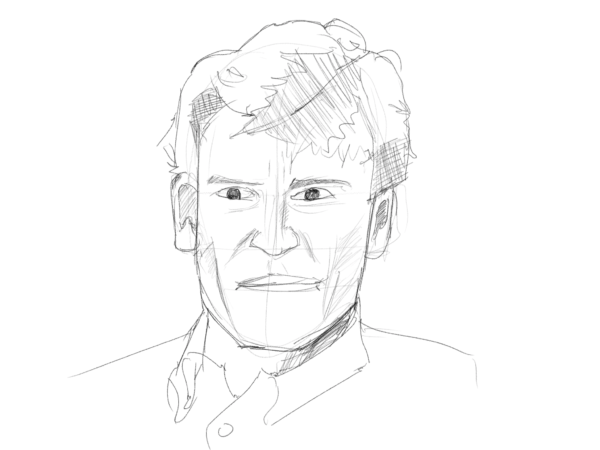
Flash Boys: A Wall Street Revolt
by Michael Lewis — (My notes)
I picked up Flash Boys because I listened to a Malcolm Gladwell podcast and he said he admires Michael Lewis as a storyteller. Looking at my full list, the books I enjoyed most were the ones that weren’t business/self-development related.

Grit: The Power of Passion and Perseverance
by Angela Duckworth — (my notes)
I listened to Grit 3 or 4 times and it’s reminded me how beneficial the practicing difficult things is.

Spoiled Brats: Stories
by Simon Rich
I spent a few weeks reading every book Simon Rich has published. I heard him as a guest on James Altucher’s podcast and checked out some of his stories in The New Yorker. I laughed out loud regularly while reading Rich’s work. I’d love to have that ability someday.
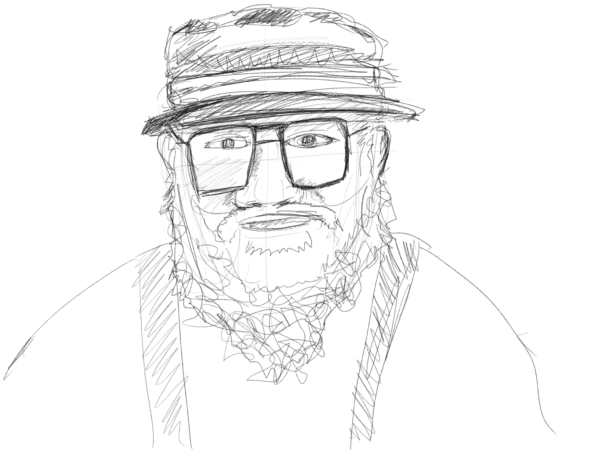
A Knight of the Seven Kingdoms
by George R. R. Martin
During a Game of Thrones season, it’s so easy to eat, breathe, and sleep theories. Dunk and Egg are referenced often so I thought it’d be good to actually read the book with their story. Can’t recommend it enough. Particularly if you want a taste of George R. R. Martin’s writing but don’t want to commit to reading the main series.
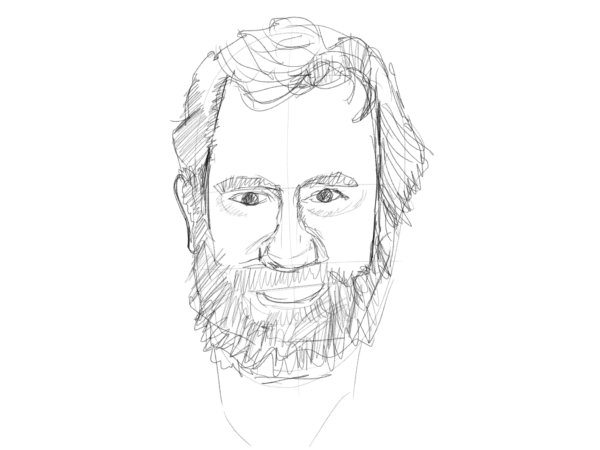
Sick in the Head: Conversations About Life and Comedy
by Judd Apatow
I bought this thinking it’d be something I read in short chunks over the next year. Instead I’ve been setting aside hours at a time to read it. It’s a collection of interviews by Judd Apatow. The fascinating thing is that the interviews range from recent ones to all the way back to when Apatow was in high school. We know how these people turned out. It’s great to see them talk about their dreams before they happen.
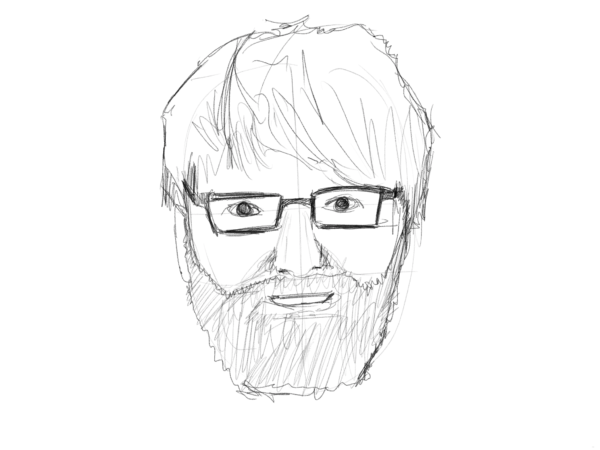
But What if We’re Wrong: Thinking About the Present As If It Were the Past
by Chuck Klosterman — (my notes)
Westworld started a few weeks after I finished reading But What if We’re Wrong. So I basically haven’t stopped thinking about simulation theory. Add in a percentage of Joe Rogan podcast discussing how our brains work and I don’t know what to believe anymore. Our minds are powerful. That’s just a few pages of the book and the rest is just as good.

How To Write Funny: Your Serious, Step-By-Step Blueprint For Creating Incredibly, Irresistibly, Successfully Hilarious Writing
by Scott Dikkers — (my notes)
I read a few different how-to comedy books this year. This was the most recent that I read but I also think it was the most relevant to what I want to do. All the books have the same conclusion: writing jokes is hard work. Next year I’ll really sit down and try applying the methods from the books.
(I also really enjoyed Comedy Writing for Late-Night TV. When I was growing up, my dad used to watch Jay Leno every morning taped from the night before.)

Ego is the Enemy
by Ryan Holiday — (my notes)
The Obstacle is the Way really helped me a couple years ago. I was stumbling while trying to reach some career goals. It helped me look at setbacks as challenges to learn from. Ego is the Enemy has been helpful for my current stage of career goals.
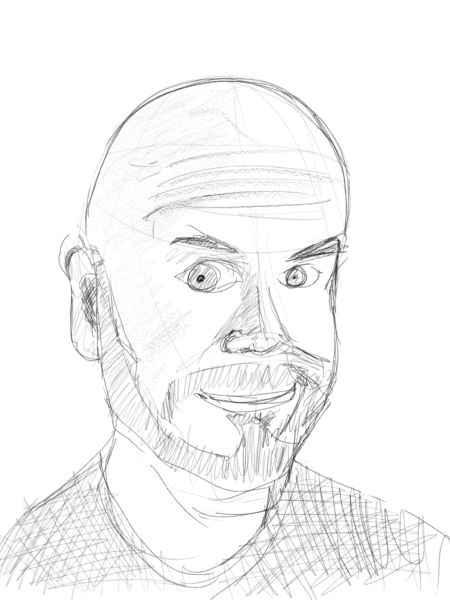
Anything You Want
by Derek Sivers — (my notes)
I admire Derek’s views on work, business, and happiness. When picking people whose footsteps I’d like to follow, he’s near the top of the list.
My book notes make up the majority of things I write for this blog. It’s almost entirely inspired by Derek’s book notes.
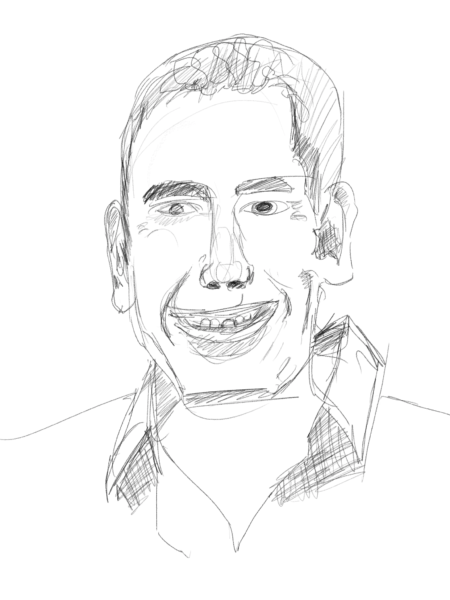
The Rise of Superman: Decoding the Science of Ultimate Human Performance
by Steven Kotler
Flow means things are going right—adrenaline means something has gone wrong. This book is about action sports athletes and flow. First, action sports make for good stories. I don’t have aspirations to be one of those athletes, but it’s been valuable knowing how to reach flow and understanding how it can improve work in all fields.
Honorable mentions
- I finished Save the Cat, which I put on hold for probably a year. It really made me think about structure in any writing and how systems and formulas fit into anything creative.
- I started being a less dumb with money this year and some credit goes to Happy Money. It explains the best tactics to spending money with a focus on increasing happiness.
- Smarter Better Faster got me to really set high level and low level goals. It’s not the first book to talk about it but it resonated this time around and now am quick to remind myself to review a high level goal when I’m stuck during a low level goal.
- 10% Happier is the best audiobook I’ve listened to. It got me to try meditating and it’s one of the things I’ll really focus on next year.
- I’m finishing up Tools of Titans. It’ll probably be at the top of next year’s list.
I’ve got an idea
I’ve been posting something every day from my iPad. Sometimes it’s a few drawings. Sometimes it’s a few photos. Sometimes it’s just a single drawing. From writing 100 posts in 100 days, one big takeaway is that posting just to post sometimes wasn’t worth it. Putting junk out into the world might not be productive.
80 posts in 100 days might have resulted in better posts. Or maybe it wouldn’t. Maybe I would have taken it too easy, skipped a few too many days in a row, then just quit.
After the 100 posts project, I decided that working on something every day was valuable. Flexing your creative muscle is really rewarding. The value of publishing daily was the goal itself. It was a hard goal. I knew if I reached it. I didn’t build a readership so there wasn’t value in that sense. Even if I shared it more widely, the content likely isn’t good enough for it to build a readership. Still, it was good to built that habit of finishing.

I want to continue being creative daily. Sharing a single sketch is likely better through social media than a standalone post on this blog. So I’ve been thinking (as in, this is an idea from today) about how to present collections of sketches and other things I’ve made through the week.
I’ll make a video. It’ll mostly consist of sketches done through the week. I’ll share things I learned that week through books or other resources. It will be part of a weekly post. This weekly post will be a hodgepodge of things. That video. A post explaining some of the process of making the video. Links from the week. Book notes from the week. Meals I ate. Who knows.
That’s what I think it will be. One post each week. I’ll work on it in some capacity every day. The glorious return of my non-glorious personal blog. Here’s a preview.
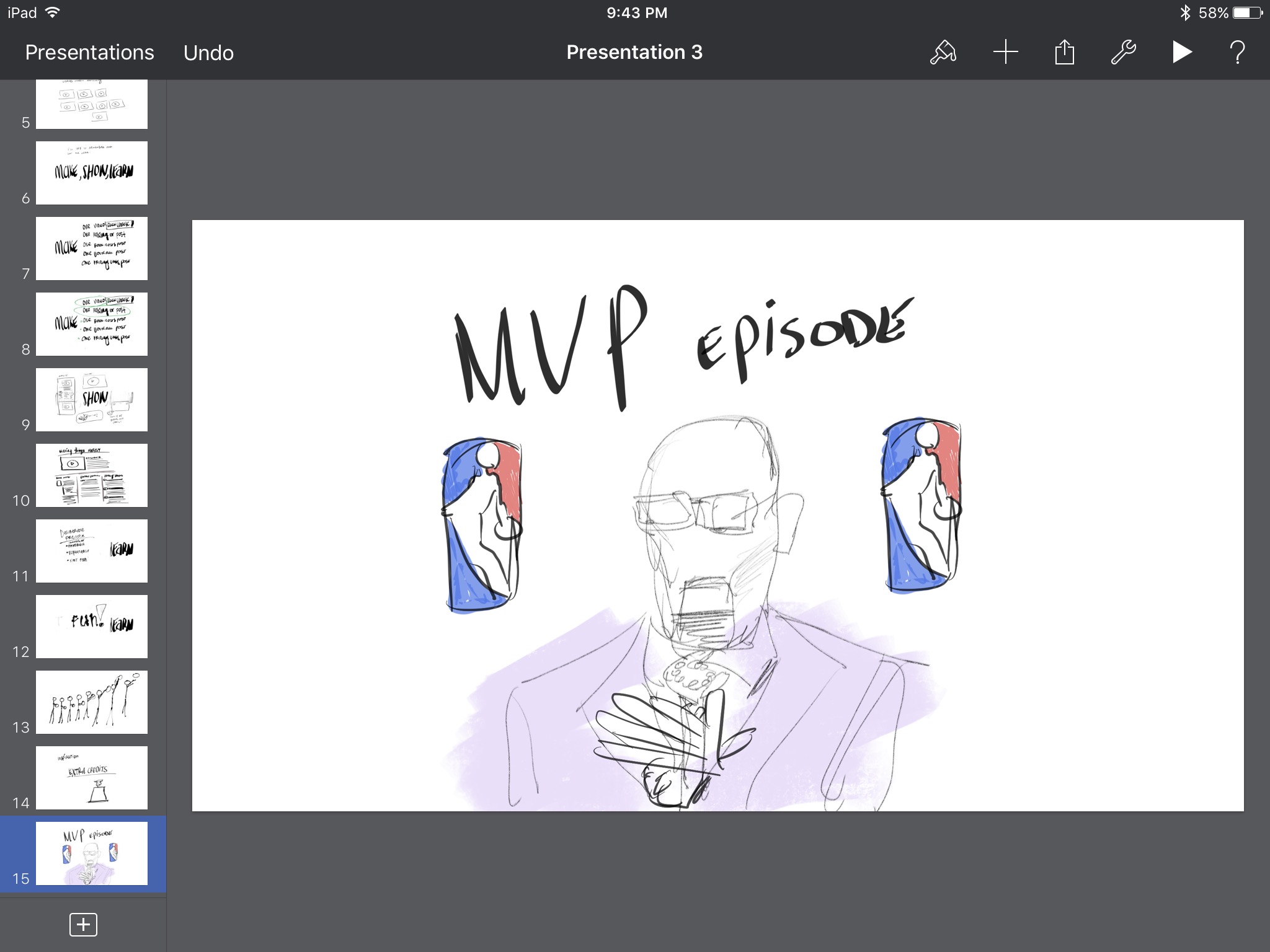
So, yes, I started it. I’m still keeping with this month’s theme of using my iPad for creating content. I was inspired by watching an episode of Extra Credits on MVPs. I was familiar with it in startup terms but was happy to see the idea reflected in video games. An MVP is stripped down much further than it might first seem.
The MVP for these new weekly videos and posts will start with slides that I’ll narrate. Right now I’m using Procreate for sketching and Keynote for organizing the sketches. Eventually I’ll record something for it. I’m aiming for 40 slides. That should get me to about a minute. That’s my goal for the week. A one minute video. We’ll see how it goes.
A drawing
Here is a drawing I did of all the different things that my wallet turned into yesterday. I drew these in Notability, which I’m trying out for drafting more visual blog posts. Unfortunately, it doesn’t look like you can just export to PNG so I might need to figure a better system out. Probably with Workflow or something.
Some photos
A sketch a day #2: and a purchase
From what I’ve read about digital art, a common suggestion is to start by learning to draw with paper and pencil. You can get too caught up with digital tools and fixing mistakes on the fly. And trying to refine things without moving on to a new drawing. You can be less thoughtful and all that.
I bought an iPad Pro today. Here’s my first sketch.

I have more thoughts on this. I thought it’d be good to have a hobby that isn’t programming-related. Which I guess writing is, but writing is also mostly sitting at a keyboard and typing. Which, considering the amount of email exchange that takes place in any knowledge work, is what a lot of the work day looks like.
Now I’ll sketch. Which is what the work day probably looks like in some aspiring designers’ heads.
Oh yeah, so here’s all the things that I got. An iPad Pro 9.7″ 128GB silver. An Apple Pencil. A Logitech Smart Case. I actually really like the keyboard so far.
“So far” being pretty early days right now, because I haven’t left the Apple Store yet. As a device for creating content, this seems like a pretty good set up for what I want to be doing.


All the books I read: 2016 Q3
Note: I’ll update this with some directives and author names. I’m posting things that need a few changes to push myself to finish posts. Knowing a post is published with a few things to finish will urge me to finish more than having something 80% done in draft state.
Thought it’d be good to follow up on All The Books I’ve Read This Year (written near the end of June 2016). I read 15 books. A few were pretty short, but I’ll go ahead and count them.
Here are the books I finished in July, August, and September 2016.
Flash Boys:
But What if We’re Wrong
Comedy Writing for Late-Night TV
Ego is the Enemy
Sprint — You can prototype anything.
Food Rules
Originals:
Spark Joy
You are a Writer
The 15-minute Writer
I tried reading more fiction (aka nearly all of Simon Rich’s published books). It really is more pleasant reading fiction at night before bed. Reading things that make you laugh turns out to be great for winding down.
Elliott Allagash:
Last Woman on Earth:
Free Range Chickens:
Ant Farm
Spoiled Brats
Audiobooks
I haven’t listened to audiobooks quite as much. I have a hard time getting as much out of them. I can get through them, but I don’t know if I’m retaining what I listen to. (I also think this is overestimating how much I retain from what I read in books.) One book that stuck out is Grit. I suspect it’s because I was writing book notes each day as I listened. Actually, whether it’s an audiobook or traditional book, writing notes while reading helps get the most value out of reading.
Grit
Bull’s Eye
One More Thing
Daily Rituals
Do you Talk Funny
Body back October
I want to focus on my health in October. It’s just been slipping. Or it’s just becoming thirty. I am not sure. Here’s a list of things to improve on:
- Sleeping more: Likely the most return on effort. If I can nail my sleep, the rest of this list will be a lot easier. If I do all the others but sleep 4 hours a night, I’ll feel horrible by the end of the month, guaranteed.
- Workout consistency: I want to work out 3-4 times a week and lately it’s been more like once or twice a week. So I think I need to find a workout I can do every day, knowing I’ll miss a few days each week.
- Eating less: I eat somewhat clean, but I eat more than is optimal for my goals. Between cleaning up my diet further and just eating less, I think I should focus on eating less right now.
- Meditating more: I need to just do this. I believe it works. Which might be one of the first steps for it to work. I get less stressed and more focused when I was starting meditation. That also might mean I had less on my plate and felt like I had time to meditate. I’m sure I’m not the first one to say it: maybe I don’t have time not to meditate.
- Fixing my knee: This is in line with the workout consistency. I need to get my knee checked but the last time I did, my PT suggested a few exercises (clamshells, various leg raises) to do every day. I need to do them.
I’ve read it’s bad to start a bunch of habits at once. A few of these are things that I’ve done consistently for long stretches. I think I’ll be able to make it a productive month. I’ll be sure to keep you updated when the month is over. I’ll even add it to the todos.
Mise En Place
I’m giving the Chromebook another spin. I was so enthusiastic about it initially. Then I finished my 100 posts and shifted over to tinkering more to work on layout and how to present what I had written. I didn’t really share the project widely. I still haven’t.
I’m writing directly in the WordPress editor. Here I’m trying to summon some of what Seth Godin says about writing his posts directly in the Typepad editor. I wrote about this in “Seth Godin and Stephen King’s pencil“:
The significance of writing in Typepad is not that it’s the best editor or anything, it’s that it’s the location where Godin goes and knows exactly what he’s there for and what he should be doing.
I just block quoted myself paraphrasing what Godin said on Tim Ferriss’s podcast. But I shouldn’t ramble so much. Godin is top of mind because he was on Brian Koppelman’s podcast this week, in an episode titled “Seth Godin Doesn’t Believe in Writer’s Block”.
Godin and Koppelman discuss writer’s block after Godin says it doesn’t exist. I was also happy to hear Koppelman mention But What if We’re Wrong by Chuck Klosterman. Something from that book is that other explanations will come up but it doesn’t really change the day to day. Whether we’re in this dimension, in a simulation, or in a multiverse, tomorrow is still going to happen the same way.
Koppelman relates that to writer’s block in that we can say it doesn’t exist or give it a different name, but the feeling is there. He found it helpful to define it as a block to acknowledge that there’s something that can be removed.
Godwin has a request for people with writer’s block: show me your bad work. You would rather be a stuck writer than a writer who is writing stuff you are not proud of.
What I’m arguing is, let’s begin by saying “I am writing work I am not proud of. I would like to to be better.”
While they might not agree on what it’s called, they seem to agree with how you deal with it. Writing a lot. Koppelman is a big proponent of Morning Pages (I’m a fan and always want to do it more). Seth says you just get into a place where you’ve got what you need and you just write. Even if it’s bad.
Mise En Place—it’s its own reward. The chef lines up all the ingredients, pre-cut ready to go. So that when the things are fired up, you just cook.
Well my friend Isaac Asimov, who published four hundred books before he died. Isaac got up every single morning, he used to near the Lincoln Center. He sat in front a manual typewriter and he typed for five hours. And if he didn’t have anything to say, he still typed. And that’s the answer to having enough good ideas. You have to have bad ideas.
Oh I’ve got bad ideas alright. Let’s see if I can learn to get to the good ideas.
I sat down forty minutes ago and thought I wouldn’t have anything to write about tonight. I felt blocked, but I resolved to sit here and type.
I am writing work I am not proud of. I would like it to be better.
Only emotion endures
“Only emotion endures.” — Ezra Pound
I heard this quote and it made me think of the idea that our memories are faulty in details, but pretty good for remembering feelings.
“I’ve learned that people will forget what you said, people will forget what you did, but people will never forget how you made them feel.”— Maya Angelou
Maybe you’ve read a few of my posts and you see that I’m starting with profound quotes. “Maybe he won’t be writing about another podcast he listened to that day.” Wrong. Okay, well maybe it won’t be from the Tim Ferriss Show. Wrong.
I heard the Ezra Pound quote on a Tim Ferriss Show episode with Mike Birbiglia. He says that he keeps mind writing slogans around to remind him what’s important when writing. It’s easy to get caught up trying to make a cultural reference work in a scene. A lot of those things go away and the work won’t stand the test of time:
What is this about? It’s about friends. It’s about a group of friends coping with what it’s like to be in their 30s and confront the idea that they might not be successful in their life the way they thought they would be successful in life. Whenever it would veer into something that was like a cultural reference I would be like no no, let’s pull it back into it’s about friends.
That works now. If it’s good, people will relate a decade from now. Which reminds me of something Simon Rich said on the James Altucher Show about writing with emotions in mind:
The way I try to write about it is by coming up with a very high stakes usually supernatural premise which will get across how extreme that emotion feels. I try to write about emotions that I’ve experienced, not in the way that they actually occurred, but in the way that they felt.
A couple days ago I wrote that his stories are somehow both absurd and completely relatable. That somehow is by starting with something relatable…
When you meet somebody knew and it goes well, that’s a pretty low stakes, boring story. But when you’re in it, when you’re living in it, it feels about as high stakes as anything can be.
… and magnifying the emotions with the power of absurdness:
So that’s why that character gets a congratulatory call from the president, because that’s how it feels, to him.
This marks the end another post. Someone pour the Gatorade on me.


